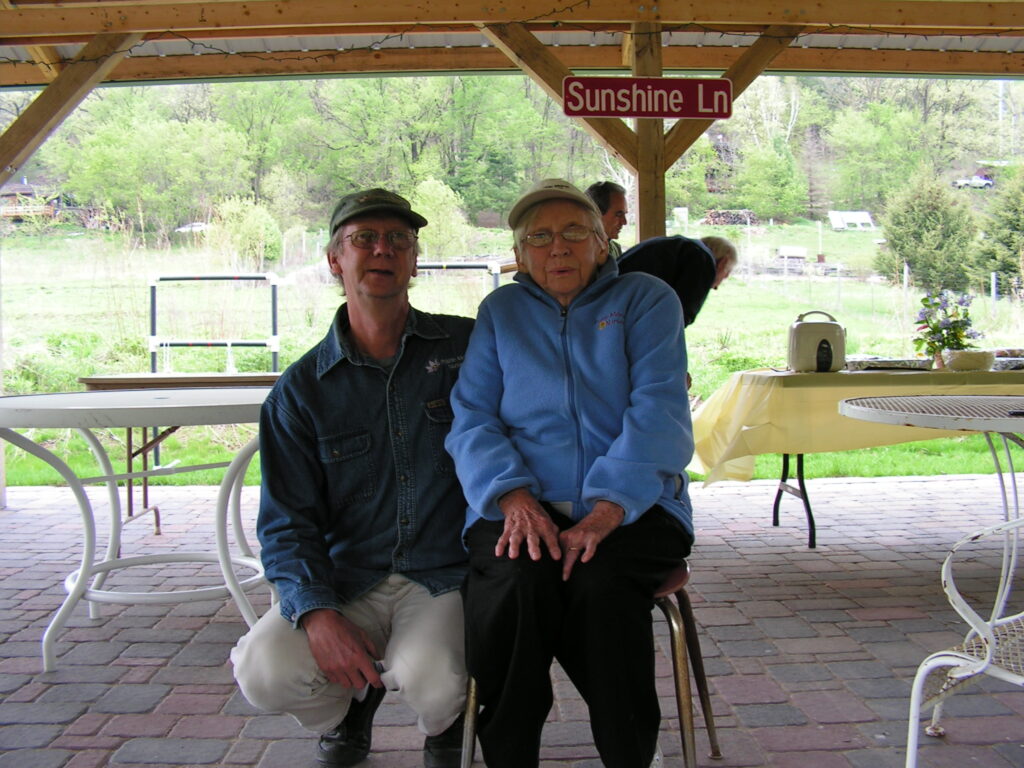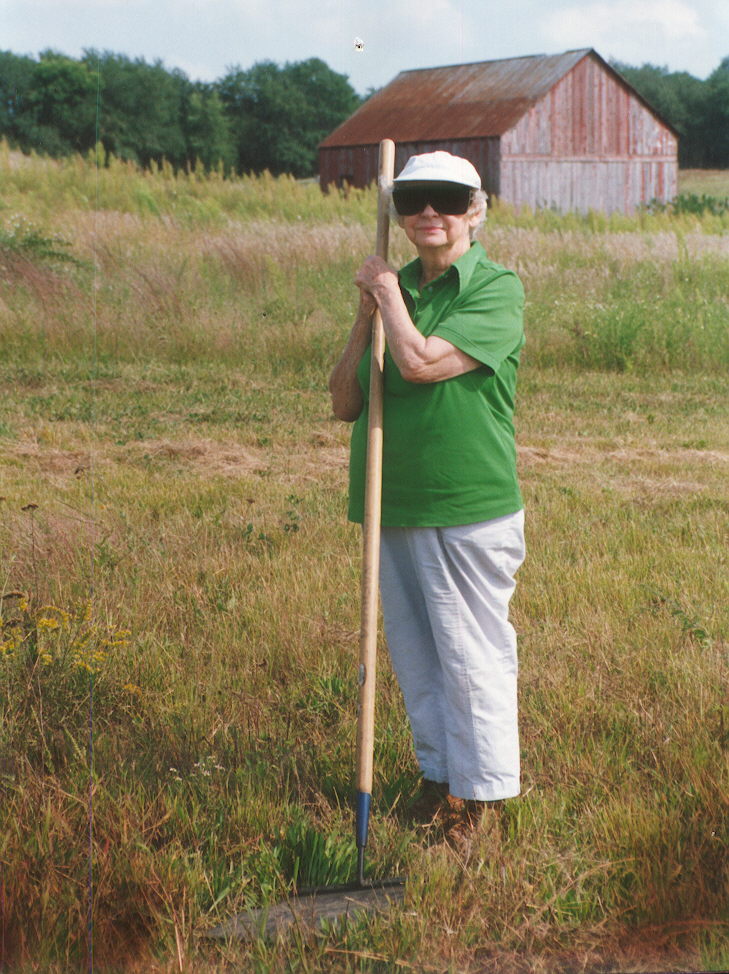Despite her legendary status among Upper Midwest prairie enthusiasts, the strongest impressions upon meeting Dot Wade in person were of humility, personal warmth, easy humor, a keen intellect and compassionate curiosity.
Even as Alzheimer’s disease gradually eclipsed her bright personality in her final years, Dot’s benign countenance and friendly presence were inspirations to those around her when she ventured to potlucks, social gatherings or prairie tours. She lived the last six years with her son, Prairie Moon Nursery co-founder Alan Wade, in the house that he built on Wiscoy Valley Land Co-operative in southeast Minnesota. She traveled with him annually to his winter home in the Philippines.
Global travel extended an itinerant theme that prevailed through Dot’s long life. The youngest of five siblings, she was born Dorothy H. Richman at home in Atlantic City, New Jersey, on September 13, 1914. She was raised in Sharptown, N.J., and migrated annually with her affluent family to their winter home in Florida.
Her passion for botany brought her to the University of Wisconsin in Madison, where her undergraduate research included root studies of several native plant species at the newly-opened university arboretum. She met and fell in love with Doug Wade, then a graduate student of famed ecologist Aldo Leopold.
In a 1995 interview with Morris Wiener, Dot recalled the heady intellectual climate in Madison when she first met Doug:
“I remember that I was taking landscape architecture courses in the horticulture building, and our professor said there was a new, exciting professor that the university had hired and that we should pay attention to him. That impressed me, and then when I met Doug and found that he was Leopold’s graduate student…wow! At that time, the university respected Leopold, but I don’t think that he was widely known. He had not done much writing previously, but at Madison he was writing lots and lots of journal articles. All of the chapters in A Sand County Almanac (1949) had been his journal articles, and it was published the year after his death.”
In the midst of their academic work, Doug and Dot eloped to the Wisconsin Dells, where they married and honeymooned in 1936. Their combined expertise and zeal for restoration made them a dynamic, activist couple. Their shared interests and his career eventually took them to Pennsylvania, Missouri, New Hampshire, South Carolina, Iowa, Saskatchewan and Illinois. They raised a son and daughter during those years.
Wherever they landed, the Wades had a positive impact, creating new programs and opportunities to share their love of the natural world. They were early advocates of protecting and preserving prairie remnants, including the Nachusa grasslands in Illinois. In 1964, after four years in Regina, directing education programs for the Saskatchewan Department of Natural Resources, Doug joined the faculty of Outdoor Teacher Education at the Lorado Taft Field Campus in Oregon, Illinois.
In 1965, Dot and Doug purchased five acres of land overlooking the Rock River north of Oregon. Their landscape, featuring native remnants in both hillside pasture land and woodland acres, was complemented by construction of their beautifully unique house, built with limestone rock. Doug described the house, designed by architect Verne Solberg, as extending “organic” concepts developed by Frank Lloyd Wright, whom Dot had met at a party.
Doug and Dot spent 13 years restoring and propagating native plant species on their land, increasing their numbers to well over 100 from the three dozen or so that they originally identified. In 1970 the Wades opened Windrift Prairie Nursery, one of the first of its kind, to offer native seeds and plants commercially.
In his writings about their nursery endeavors, Doug stressed the need for accurate record-keeping, integrity in genetic tracking and a strong code of ethics. Windrift Prairie Nursery provided inspiration and principles, as well plants and seeds, to the Wades’ son Alan when he opened Prairie Moon Nursery in 1982.
Many whose lives were touched by Dot and Doug Wade remember what a powerhouse couple they were, complementing each other’s talents and style. Dot reflected on this in her interview with Morris Wiener:
“I always felt lucky that we were interested in the same things. What he liked to do, I liked to do, and what I liked to do, he liked to do. He was a better birder, and I might have been a little better at plants. We could go anywhere outdoors, anytime, and have a marvelous adventure together because of our interests. We enjoyed meeting the same kinds of people. Wherever we went, we could always find a nature club or birding group. We liked mountain climbing, we liked canoeing, and wherever we were, our interests seemed to focus together on nature and the outdoors.
“I always enjoyed the classes he taught at Taft Campus, and going with the students on field trips. Doug felt that he needed me on the trail. I could always add a little more to the class with my botany and natural history background. Two people in the same field might have had an ego problem, but it didn’t bother me that he was more outgoing. We worked together, and I was happy to be at the end of the line and follow him around. I think that is why I married him. He promised to take me camping! I think that if I had my own professional career, then there might have been conflicts, but that wasn’t the case. Doug could always depend on me to help out with things that students wanted to know about plants.”
Doug died suddenly a few days after his 78th birthday in 1987. Dot continued living in their home until she moved to Minnesota in 2003. Throughout her long, productive life she made things better wherever she applied her energies and knowledge. Her restoration work lives on in natural settings and human hearts throughout the land.
***
Reference: Wiener, Morris, Pathways: The Ontario Journal of Outdoor Education, v7 n6 p 32-35, Oct-Nov 1995
***


